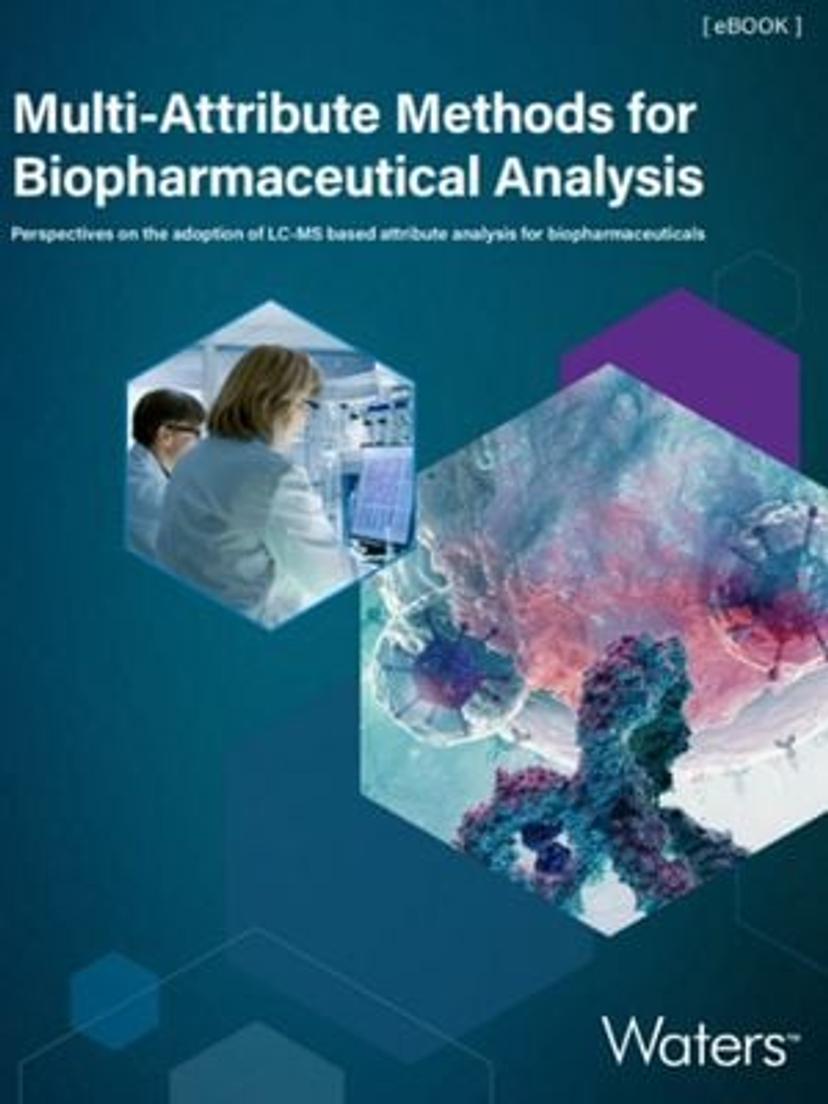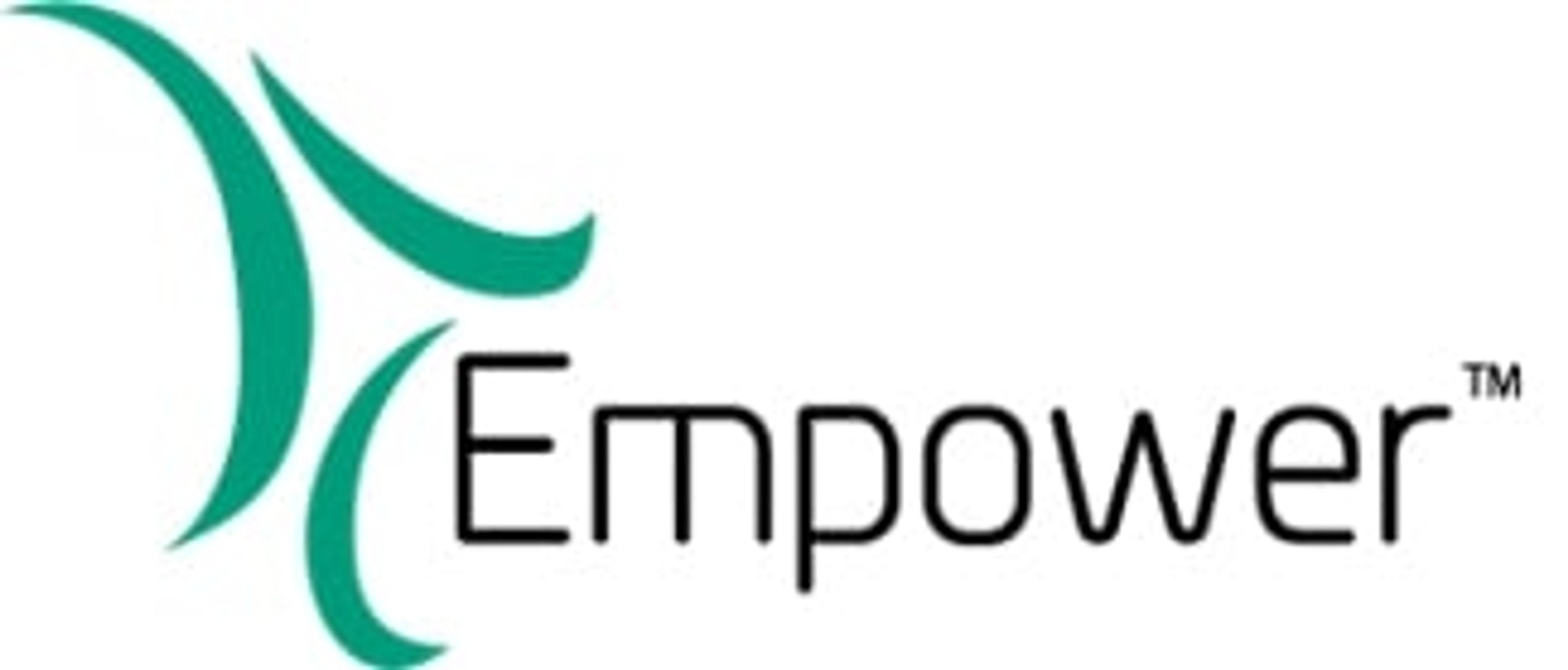Unlocking the potential of the multi-attribute method (MAM): The future of biopharma
New eBooks by Waters Corporation reveal the capabilities, adoption trends, and future of MAM for biotherapeutic analysis
2 Apr 2023

In this SelectScience® interview, Dr. Scott Berger, a Senior Manager in the Biopharmaceutical Markets team at Waters Corporation, sheds light on the company’s newly published eBooks on multi-attribute method (MAM) workflows for biopharmaceutical analysis. Designed to help biopharmaceutical developers and producers unlock the full potential of MAM analysis, these free-to-download eBooks provide insight into the expanding capabilities of multi-attribute method and practical advice on overcoming deployment barriers. In this article, also discusses the current and emerging applications of MAM analysis across biotherapeutic development, manufacturing and QC, and explains how Waters is positioned to help organizations avoid common pitfalls when looking to leverage this burgeoning technique.
The rise of the multi-attribute method
As the quantity and complexity of recombinant protein biotherapeutics and vaccines have increased, so has the need for robust analytical tools to understand their variability, both intrinsic to their production, and as the result of environmental degradation pathways such as oxidation, glycation, and deamidation. Over the past five years, MAM analysis using liquid chromatography – mass spectrometry (LC-MS) has emerged as a valuable and powerful tool. Compared to traditional chromatographic and electrophoretic assays that only indirectly measure product variation, MAM analysis relies on the selectivity, extended dynamic range, and specificity of LC-MS to directly assess molecular attributes that contribute to efficacy, safety, stability, and process robustness – typically within a single multiplexed analysis. The methodology has initially been deployed to complement, but could ultimately replace, multiple legacy techniques for monitoring these attributes across development, manufacturing, and release, for both innovator and biosimilar drug products.
Current and emerging applications
Multi-attribute method assays are commonly employed at the digested peptide, subunit, or intact protein level of a biotherapeutic to achieve three primary goals. “The first of these is identity testing, which can be achieved using specific masses for an intact molecule or its individual subunits, or by monitoring signature product-related peptides in a product digest with a peptide MAM assay,” explains Berger. “The second common usage of MAM is targeted attribute analysis, for example, looking at oxidation in a subunit-based MAM assay or using relative levels of modified and unmodified peptides to follow the intactness, stability, and predicted efficacy of molecules, including glycosylation, oxidation, deamidation, isomerization, and other discrete modifications.”
“The third, powerful but arguably most problematic function of an MAM assay is for purity testing, also commonly referred to as new peak detection (NPD),” he adds. “MAM analysis can offer a highly sensitive test for detecting unexpected impurities, but the challenge is achieving a level of consistency in sample processing, sample analysis, and data processing to avoid false negative and false positive peaks and the need for manual interventions. Still, many see promise in utilizing MAM for purity-based assays, and at Waters, we have spent a lot of time optimizing our algorithms to minimize false positives and create a peptide MAM workflow that is resilient to these challenges.”
These uses of LC-high-resolution MS technology peptide-level MAM analysis for ID, targeted attribute monitoring, and purity assessment, are examples of several workflows detailed in a new Waters application eBook, which provides a selection of multi-attribute method workflows that have been developed to support MAM analysis across all stages of biotherapeutic development and commercialization. “This collection of application notes is the first of the two eBooks we’ve recently published, in which we address the implantation of MAM analysis, both at the mAb subunit and digested peptide level,” explains Berger. “It talks about the technical practice of implementing MAM, and recognizes the fact that it isn’t limited to just one type of LC-MS workflow. For example, high-resolution mass technologies can be used for product identification, targeted monitoring, as well as purity assays, while nominal mass technology such as the ACQUITY™ QDa™ Mass Detector and Empower™ can be fit for purpose if you're focusing on identity testing and a targeted set of attributes.”
Adoption trends and challenges
To complement this application eBook, Berger and his coworkers recently authored a second eBook that highlights perspectives on the capabilities and adoption trends of multi-attribute method workflows within the biopharmaceutical industry. “We took the experiences of working with our customers and synthesized those into several articles that provide insight on where MAM analysis is successfully deployed within the biopharmaceutical industry, what some of the key challenges are that these organizations are facing, and potential ways of meeting those challenges,” he explains.

The perspectives eBook is divided into three sections. “The first article examines where most companies are employing MAM today, in product and process development, while the second focuses on the emergence of MAM analysis in manufacturing and quality control environments. We thought it was important to address the dynamics and challenges of those implementations separately,” says Berger. “In the third section, we look at both the technical and the business challenges that companies who are implementing MAM analysis have faced, and describe how Waters is helping them to avoid these potential traps.”
According to Berger, the third section not only arms readers with best practices to avoid common MAM pitfalls but also aims to spark discussion at multiple levels in their organization about what deploying MAM looks like. “It explores some of the technical challenges of building a reproducible assay, but also covers a set of business practicalities, including elements to consider when you've gone through the proof of principle stage and are thinking about scaling up deployments of MAM in a development organization, and the additional challenges of expanding MAM into a regulated environment for process monitoring or quality control, as it becomes more of a workhorse technology within your company's operations.”
Partnering for success
Along with signposting additional multi-attribute method-related resources, including webinars, infographics, and examples from peer-reviewed literature, the two eBooks highlight how Waters is positioned to help biotherapeutic developers leverage MAM as a provider of industry-leading analytical and informatics technologies. “Waters has shown itself as a capable partner for the biopharmaceutical industry and we’ve really been able to put all the pieces together – automated sample preparation separations, mass detection, and informatics sides – to build workflows specifically for MAM analysis that drastically simplify the process for users,” asserts Berger.
The eBooks detail how systems such as the ACQUITY QDa Mass Detector and the BioAccord LC-MS System can streamline the user experience to the extent that QC technicians and bioprocess engineers can conduct assays without relying on an MS expert for routine operations. Moreover, when paired with the automated data processing features of the Peptide MAM app within the compliant-ready waters_connect informatics platform, these technologies provide operators with scalable, application-driven workflows that can be easily integrated with their existing analytics, enabling rapid automated sample analysis while minimizing the risk of human errors.
The company also feels that customized outcome-based training for MAM workflows is important to the successful deployment of MAM outside of traditional mass spec characterization labs, both onsite and through remote application support. “We have the long-term commitment to all the elements of the solution, to keep our customers moving forward and help them become successful as the technology evolves,” Berger adds.
We have the long-term commitment to all the elements of the solution, to keep our customers moving forward and help them become successful as the technology evolves.
Dr. Scott Berger Biopharmaceutical Business Waters
LC-MS-based multi-attribute method assays are gaining broader acceptance in the biopharma industry, and Berger sees them becoming even more integral to biotherapeutic development, process monitoring, and quality control in the future. “The fact that regulators are really interested in seeing a transition to attribute-based analysis is starting to get the attention of the majority of companies today,” he says. “For example, the emerging technologies team (ETT) at the FDA has identified MAM as one of their high priorities, and are working with the industry to make sure people are getting it right, that best practices can be documented, and that the science of MAM is moving forward.”
“A lot of the momentum comes from that regulatory encouragement, but people are also making the business case within their companies,” he continues. “Better knowledge of molecules during development can lead to better control of processes and faster decisions to accelerate the path to clinical and commercial experience, so there’s an independent business benefit of moving to these more modern multiple attribute-based assays.”
Moving forward, Berger expects to see increasing use of MAM for routine analytical testing in molecule and process development as well as its routine expansion into manufacturing and lot release. “There are several companies who are in the clinical space with MAM-based assays, and that's relatively new over the past couple of years,” he says. “People are doing their proof of principle largely in development, and as those molecules transition into the preclinical and clinical phase, they're making decisions whether to progress those assays either for information only (FIO) in clinical lot release or with actual release specifications against them. We're seeing both these days.”
The current expectation by many regulators, he adds, is for data from MAM to be provided in parallel with conventional assays to ensure that MAM measurements have as good or better sensitivity and selectivity. “There’s an expectation that as companies progress through their clinical and commercial experience, they can build up a case to drop the less sensitive, lower dynamic range conventional gel electrophoretic or chromatographic assays, and continue with the information rich MAM assays they've established.”
“We’re still in a world where you're going to see the requirement to do both for a while. However, the long-term benefits of being able to reduce the number of assays required for lot release using MAM is definitely there, which was one of Amgen’s original objectives when it first championed the approach eight years ago.”
Want to learn more about this topic?
Download the latest eBooks from Waters to explore perspectives on the adoption of LC-MS based attribute analysis for biopharmaceuticals and find out more about what can be accomplished using multi-attribute method analysis.



